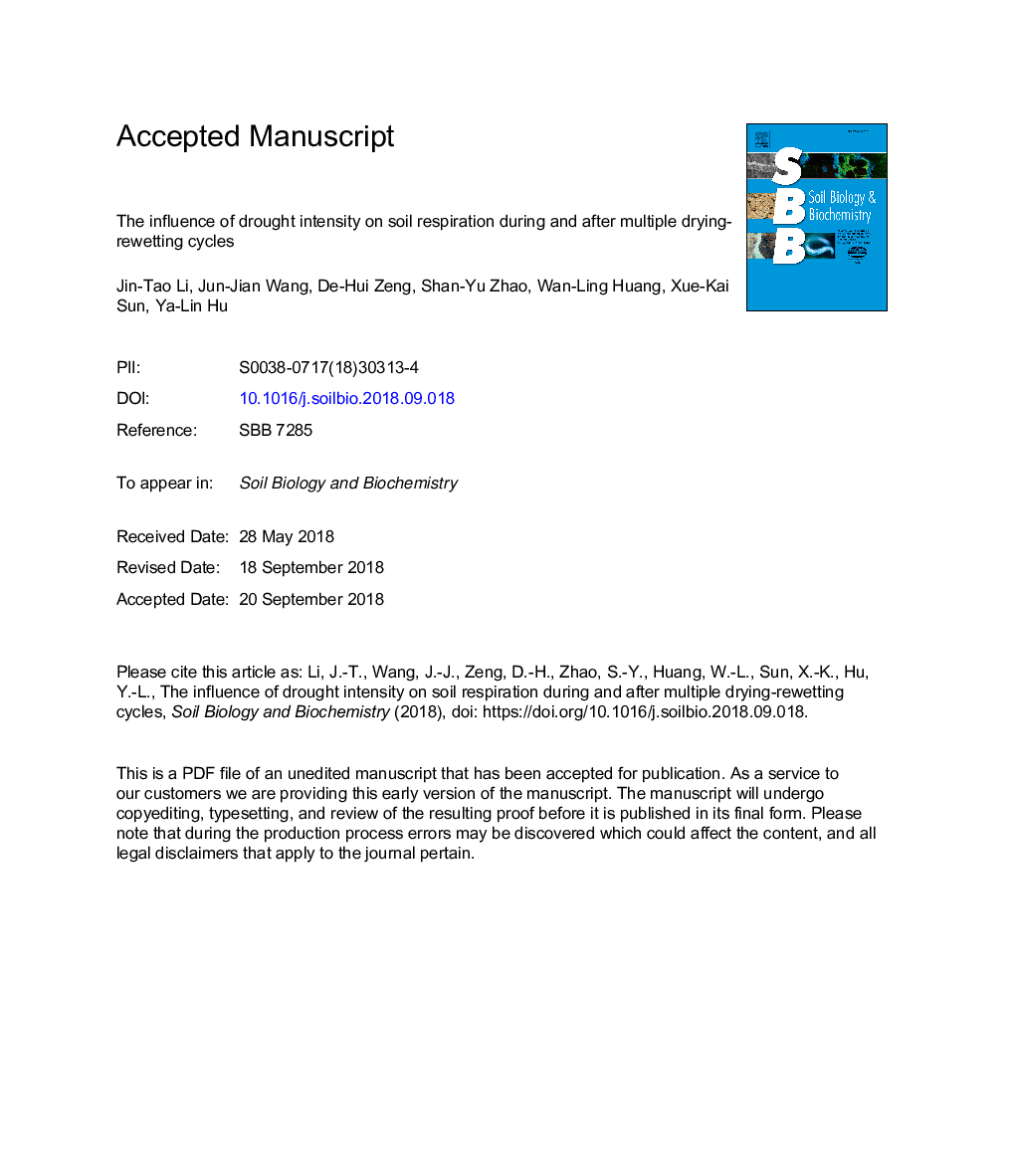| Article ID | Journal | Published Year | Pages | File Type |
|---|---|---|---|---|
| 11025991 | Soil Biology and Biochemistry | 2018 | 39 Pages |
Abstract
Global climate change is projected to intensify soil drying-rewetting (DRW) events with extended drought, especially in arid and semiarid ecosystems. However, the extent to which the soil DRW with intensified drought can alter soil respiration (Rs) in forests is still under debate, and subsequent legacy effects on Rs are not well understood. Here, we conducted a 180-d soil incubation experiment to investigate how soil DRW with different drought intensities alter the Rs in poplar (Populus simonii) and Mongolian pine (Pinus sylvestris var. mongolica) plantations. The incubation experiment included four 30-d cycles of 1) constant moisture treatment (control), 2) DRW with 10-d drying and 20-d rewetting (DRW10-20) or 3) DRW with 20-d drying and 10-d rewetting (DRW20-10), and then an extended 60-d incubation under constant moisture. During the four DRW cycles, the direct C release with respiration of Mongolian pine soils (27â¯gâ¯C·mâ2 in DRW10-20 and 140â¯gâ¯C·mâ2 in DRW20-10, respectively) decreased to a much lower extent than that of poplar soils (228â¯gâ¯C·mâ2 in DRW10-20 and 498â¯gâ¯C·mâ2 in DRW20-10, respectively). Rs did not significantly change during the extended 60-d incubation in the DRW10-20 treatment compared to control treatment. However, the respired CO2 were increased by 68â¯gâ¯C·mâ2 in the poplar soils and 19â¯gâ¯C·mâ2 in the Mongolian pine soils in the DRW20-10 treatment, which approximately compensated for 14% of the decreases of total respiration during four DRW cycles. This legacy effect induced by the DRW with intensified drought was attributed to the higher amount of remaining substrates and soil microbial biomass. Our study highlights that DRW can cause both direct and legacy effects on Rs, but the effects vary with drought intensity and forest type.
Related Topics
Life Sciences
Agricultural and Biological Sciences
Soil Science
Authors
Jin-Tao Li, Jun-Jian Wang, De-Hui Zeng, Shan-Yu Zhao, Wan-Ling Huang, Xue-Kai Sun, Ya-Lin Hu,
